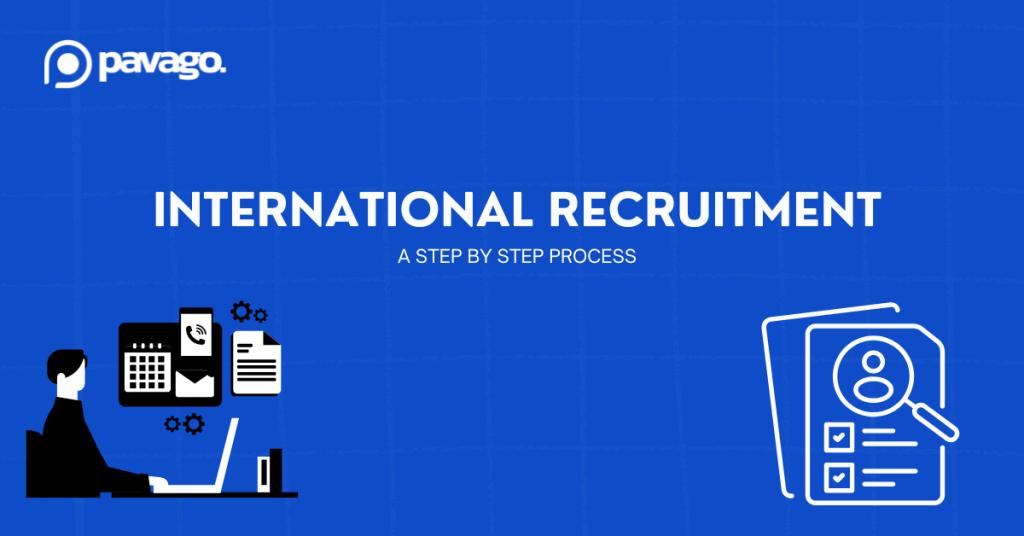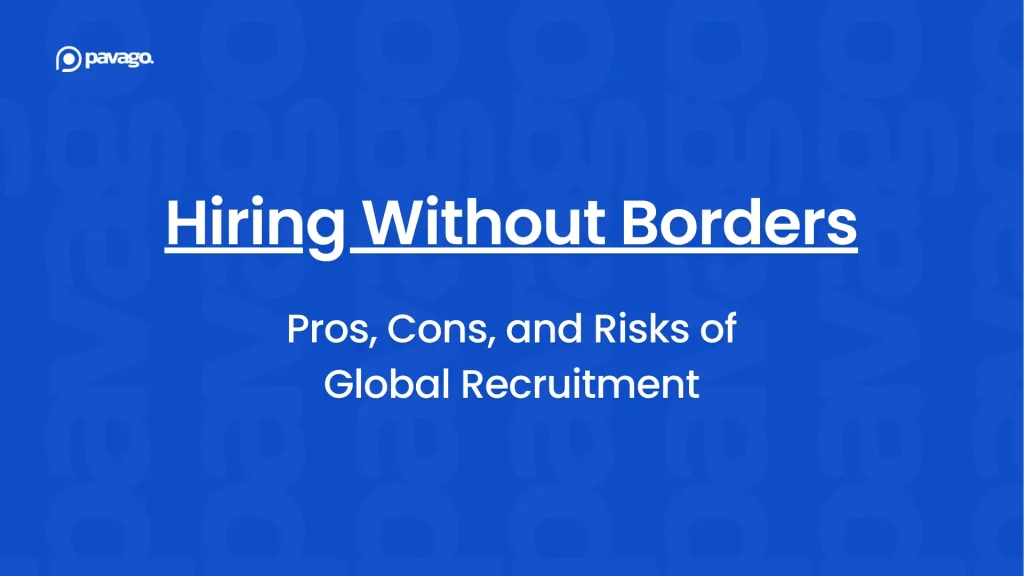Hiring in another country can be one of the smartest growth moves for a business. It gives you access to talent pools you may not have locally, lets you diversify your team, and can help you expand into new markets.
In simple words, hiring international employees can open doors that purely local hiring cannot.
That said, recruiting abroad isn’t without its challenges. You’ll need to understand different employment laws, adapt to new cultural norms, and be strategic about finding and integrating new hires.
Without a clear plan, the international recruitment process can feel overwhelming — but with the right steps, it’s entirely manageable.
This guide explains how to hire in a new country step-by-step, so you can recruit confidently while ensuring compliance.
If you want a faster, simpler way to hire globally, Pavago can help.
We connect you with A-players from around the world, and handle everything from contracts to onboarding, so you can focus on getting results from day one.
Step-by-Step Guide to Recruit Employees In A New Country
Step 1: Learn the Local Rules
The problem: Every country has its own rules for contracts, taxes, benefits, and terminations. Missing them can mean fines and legal trouble.
The solution: Before starting your search, understand the country’s employment laws. Check government resources, consult a local lawyer, or work with an Employer of Record (EOR) like Pavago to ensure you comply with all requirements. This includes knowing mandatory benefits, notice periods, and tax obligations.
For instance, hiring an AI Engineer in Pakistan means understanding paid leave rules, tax laws, and working hour limits.

Step 2: Pick Your Hiring Setup
The problem: Not choosing the right hiring structure for international recruitment can cause delays, compliance issues, or unnecessary expenses.
The solution: Decide your approach early:
- Contractor agreements for short-term or flexible roles (check legality for full-time work).
- EOR services for fast, compliant hiring without establishing a local office.
- Local entity setup for large-scale, long-term hiring when you want full operational presence.
Evaluate cost, speed, and legal requirements for each option.
For example, hiring an SDR in Colombia via an EOR allows you to set up a full-fledged sales team without committing to a physical office.
Step 3: Find Candidates
The problem: Relying on one source or generic postings can limit your talent pool.
The solution: Use multiple sourcing methods to reach the best candidates:
- Post on local job boards and professional networks.
- Work with offshore recruitment agencies who can provide access to pre-vetted, high-quality talent in your target region.
- Leverage global platforms like LinkedIn and niche job boards.
Pro-tip: For international recruitment job postings to local norms to attract better candidates and highlight benefits that resonate in that market.
Pavago can help you find top-tier talent from LatAm, Pakistan, South Africa, and South Asia for a variety of technical and non-technical roles.
Step 4: Check Candidates Carefully
The problem: Skills alone don’t guarantee a successful hire.
The solution: Assess:
- Technical expertise relevant to the role.
- Language skills are needed for communication.
- Cultural fit and adaptability to your work style.
- Ability to work effectively in your time zone.
Use structured interviews, role-specific tests, and scenario-based questions to see how they perform in realistic situations.
Role example: For an Executive Assistant in Kenya, assess cross-time-zone calendar management, attention to detail, and proficiency with collaboration tools like Slack, Zoom, and Google Workspace.
Step 5: Onboard Properly
The problem: A poor onboarding process in international recruitment slows productivity and weakens engagement.
The solution:
- Provide clear SOPs and workflow documents.
- Ensure access to all tools and systems before day one.
- Introduce them to the team via video calls to build relationships.
- Assign a mentor or buddy to support them in the early weeks.
Set clear deliverables for 30, 60, and 90 days to measure progress and build confidence.

Why Hire Internationally
Hiring internationally can transform your business in several ways:
- Access to a larger talent pool: You’re no longer limited to candidates within commuting distance. This is especially valuable for specialized roles.
- Cost advantages: In many cases, hiring talent abroad allows you to access top-tier skills and decrease recruitment costs compared to local hires, due to differences in cost of living.
- Diverse perspectives: International teams bring varied viewpoints and problem-solving approaches, which can drive innovation.
- 24/7 productivity: With team members in different time zones, your business can operate around the clock, speeding up project timelines.
- Market expansion: Hiring in a target region can give you local knowledge and cultural insights, which are invaluable when entering new markets.
For example, hiring offshore customer service reps can give you skilled, English-proficient staff at a fraction of the cost of domestic hires, while also extending your support hours to serve more customers.
Frequently Asked Questions about International Recruitment
Wrapping It Up
International recruitment isn’t just a hiring tactic — it’s a strategic growth tool. Done well, it connects you to exceptional talent, supports diversity, lowers costs, and accelerates market expansion.
The process requires careful planning: learn local rules, choose the right hiring model, source candidates from the best channels, vet for both skills and cultural alignment, and onboard effectively to ensure success.
With the right approach, global hiring can give your business a competitive edge.
Pavago streamlines every step of international recruitment so you can build a high-performing international team with confidence.
Book a call with our hiring advisor today to learn more.
















